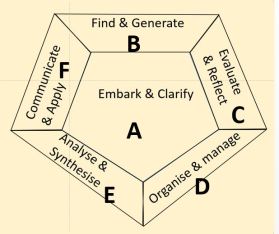For our MELT session Monday 28 May 2018 with colleagues at SIT, there are certain questions for your consideration:

Q2 What proportion of students, in a cohort of interest to you, have shown evidence up to this point of being able to work at Initiate level of MELT autonomy?
Q3 What questions or comments do you have about MELT or its application? (add to ‘comments’)
Confucius has a saying “I hear and I forget. I see and I remember. I do and I understand.” I have a feeling this is close to the MELT’s Embark & Clarify.
Hi Alfred- thanks for the comment, and great to virtually meet you today.
I see what you mean- there is the sense that its not enough to follow or improvise another’s way to embark- but it takes initiating the process to learn well. However with ‘I hear and forget’- there is the potential to understand, if its part of the seeing and doing. And each by itself can be a little limited, and even together, learning is difficult and complex.
For example, I had a call from a lady in Canberra last night, who asked me about a particular style of Persian cooking ‘crunchy-bottom rice’. After she had a previous failure I had explained it to her (hear) before and she had made it successfully (do). But she forgot what she had done that made it work, and was asking again. Sometimes, repeating the cycle of learner autonomy: follow, improvise, initiate, follow, improvise, initiate can be a powerful route to learning.
all the best
Hello Alfred, John, and Everyone at MELT @ SIT!
The question that is posted and that all of you at the Singapore Institute of Technology are wrestling with caught my eye. I am in Wisconsin, USA and have undergraduates do primary and secondary research projects each semester. They get to choose – with some limits imposed – a topic that includes at least 1 human being and interaction with 1 learning technology. The most difficult part of the process is addressing the “Embark and Clarify” portion of the MELT framework. I have worked with my academic librarian to streamline this portion of the research project. My academic librarian has kindly pointed out that my “expertise blindness” gets in the way of what is seemingly (for me) an easy task — identify a problem to research. However, as my academic librarian points out, the learner must: identify a technology (which has a subset of criteria: is it accessible, how do I use it, is it age appropriate); identify participants (age, geographic location, permission to access – if under age 18); consider time limits; narrow the question to a specific audience a specific technology, and an appropriate amount of time. You get the idea. An “expert” considers the elements of “embarking and clarifying” as an individual facet interlinked with other facets as part of a larger process. The expert can consider elements of a single facet while weaving it into the larger research process. The novice considers “embarking and clarifying” as: 1) A step that is a means to an end; 2) A distinct element that is part of a linear process; 3) A broad and general guideline that is aimed in a “general direction” but lacks clarity and focus (How does technology impact learning? versus “How does using XYZ application on an iPad impact 1st grade students’ math addition fluency?).
Whether it be undergraduate or graduate students, clearly identifying the problem and its constraints (embarking and clarifying) is where 75% of the work is located. With clarity — the rest falls into place.
What has your experience been??